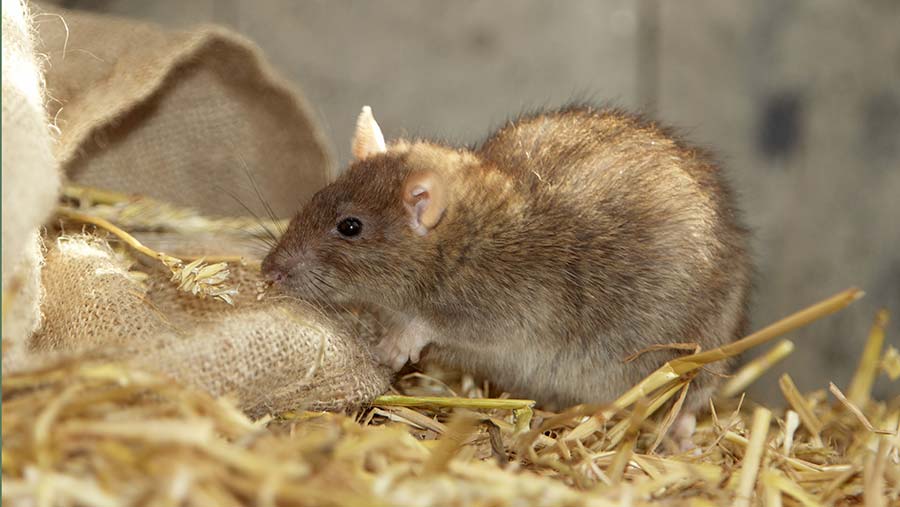Top 10 ways to control rats on farm
 © FLPA/Rex/Shutterstock
© FLPA/Rex/Shutterstock Farmers need to strengthen their defences as rats prepare to make their annual migration from ditches and hedgerows to cosier accommodation among the farm buildings.
Poison baits are the most commonly used measure but their use is coming under ever increasing scrutiny over their potential effect on non-target species.
To buy and use rodenticides, farmers must have a certificate of competence.
See Advice: Who has the right to buy rodenticides? for more details.
10 top tips for controlling rats
1 Minimise the attractiveness of the farm environment.
2 Tidy up the farmyard and remove any shrubbery, long grass, old machinery and general debris, ideally within a 30m radius of farm buildings.
3 As a second line of defence against the agility of these creatures, close all holes and possible points of entry – such as where pipes pass through a wall – and eliminate openings around doors and windows.
Guards on downpipes and screens on grilles and airways will also help.
4 Remove debris that rodents can use for nesting, such as piles of wood, piping, rubble and old equipment. It can also help to minimise availability of water near farm buildings, such as ponds, ditches and stagnant pools.
5 Feed stores need to be secure, well maintained and kept as rat-proof as possible. If telltale droppings are found, action is needed. Livestock farmers face a specific set of issues, because it is difficult to remove the rodent’s source of food.
6 Set a planned approach to baiting control programmes, which should have a start, middle and end. This may take as few as 14 days and usually no more than five weeks to clear a rat colony, depending on the severity of infestation.
7 Proprietary bait stations can be ineffective, given the natural wariness of rats, so create bait stations from materials already found in their environment.
8 Cold, shiny plastic boxes with at least one right-angle turn and mostly too small to sit up in or to eat in a group won’t attract rats.
Instead, use familiar, readily available farmyard materials such as corrugated iron, wooden sheeting, pallets, slates, tiles, bricks, blocks or old tyres to build simple bait stations.
9 Robust construction and small enough entry points to deny dog access are important.
Sturdy wooden trays around 150 x 76mm (6 x 3in) make good bait containers, protected by an immovable structure with an entry height of about 76mm (3in) and an internal height of 150-200mm (6-8in).
10 Wooden or corrugated-iron sheets propped up at a shallow angle against walls and weighted down with bricks also work well.
As do pallets raised up on bricks, blocks or old fence posts and securely covered with sheeting; the same goes for loose stacks of bricks or blocks roofed with old tiles or slates.
Get training. Lantra offers a one-day course on rodent control on farms

